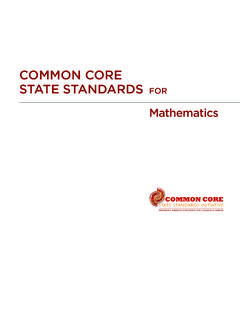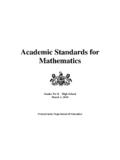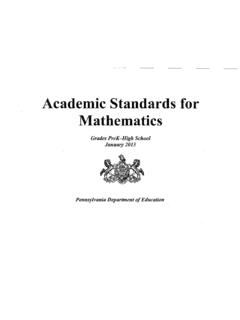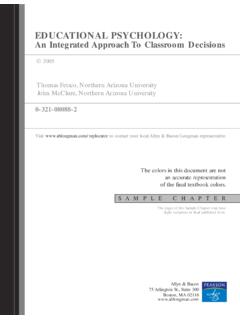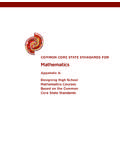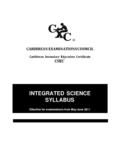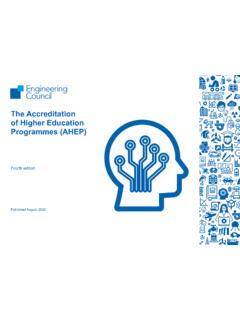Transcription of Vedic Mathematics - Methods - Vedamu.org
1 Vedic Mathematics - Methods Preface ---------------------------------------- ---------------------------------------- ---------------- 1. I. Why Vedic Mathematics ? ---------------------------------------- ---------------------------------------- - 3. II. Vedic Mathematical Formulae ---------------------------------------- ---------------------------------- 5. 1. Ekadhikena Purvena ---------------------------------------- ---------------------------------------- ------ 7. 2. Nikhilam navatascaramam Dasatah ---------------------------------------- ------------------------- 18. 3. Urdhva - tiryagbhyam ---------------------------------------- ---------------------------------------- -- 31. 4. Paravartya Yojayet ---------------------------------------- ---------------------------------------- ------ 41. 5. Sunyam Samya Samuccaye ---------------------------------------- ------------------------------------ 53. 6. Anurupye - Sunyamanyat ---------------------------------------- -------------------------------------- 64.
2 7. Sankalana - Vyavakalanabhyam ---------------------------------------- ------------------------------ 65. 8. Puranapuranabhyam ---------------------------------------- ---------------------------------------- ---- 67. 9. Calana - Kalanabhyam ---------------------------------------- ---------------- -------------------------- 68. 10. Ekanyunena Purvena ---------------------------------------- ---------------------------------------- -- 69. 11. Anurupyena ---------------------------------------- ---------------------------------------- -------------- 75. 12. Adyamadyenantya - mantyena ---------------------------------------- ------------------------------ 82. 13. Yavadunam Tavadunikrtya Varganca Yojayet ---------------------------------------- ----------- 86. 14. Antyayor Dasakepi ---------------------------------------- ---------------------------------------- ----- 93. 15. Antyayoreva ---------------------------------------- ---------------------------------------- ------------- 96.
3 16. Lopana Sthapanabhyam ---------------------------------------- ------------------------------------ 101. 17. Vilokanam ---------------------------------------- ---------------------------------------- --------------- 106. 18. Gunita Samuccayah : Samuccaya Gunitah ---------------------------------------- -------------- 113. III Vedic Mathematics - A briefing ---------------------------------------- ------------------------------ 115. 1. Terms and Operations ---------------------------------------- ---------------------------------------- - 116. 2. Addition and Subtraction ---------------------------------------- -------------------------------------- 130. 3. Multiplication ---------------------------------------- ---------------------------------------- -------- 139. 4. Division ---------------------------------------- ---------------------------------------- --------------- 144. 5. Miscellaneous Items ---------------------------------------- --------------------------------------- 151.
4 IV Conclusion ---------------------------------------- ---------------------------------------- ------------- 158. Preface The Sanskrit word Veda is derived from the root Vid, meaning to know without limit. The word Veda covers all Veda-sakhas known to humanity. The Veda is a repository of all knowledge, fathomless, ever revealing as it is delved deeper. Swami Bharati Krishna Tirtha (1884-1960), former Jagadguru Sankaracharya of Puri culled a set of 16 Sutras (aphorisms) and 13 Sub - Sutras (corollaries). from the Atharva Veda. He developed Methods and techniques for amplifying the principles contained in the aphorisms and their corollaries, and called it Vedic Mathematics . According to him, there has been considerable literature on Mathematics in the Veda-sakhas. Unfortunately most of it has been lost to humanity as of now. This is evident from the fact that while, by the time of Patanjali, about 25 centuries ago, 1131 Veda-sakhas were known to the Vedic scholars, only about ten Veda-sakhas are presently in the knowledge of the Vedic scholars in the country.
5 The Sutras apply to and cover almost every branch of Mathematics . They apply even to complex problems involving a large number of mathematical operations. Application of the Sutras saves a lot of time and effort in solving the problems, compared to the formal Methods presently in vogue. Though the solutions appear like magic, the application of the Sutras is perfectly logical and rational. The computation made on the computers follows, in a way, the principles underlying the Sutras. The Sutras provide not only Methods of calculation, but also ways of thinking for their application. This book on Vedic Mathematics seeks to present an integrated approach to learning Mathematics with keenness of observation and inquisitiveness, avoiding the monotony of accepting theories and working from them mechanically. The explanations offered make the processes clear to the learners. The logical proof of the Sutras is detailed in algebra, which eliminates the misconception that the Sutras are a jugglery.
6 Application of the Sutras improves the computational skills of the learners in a wide area of problems, ensuring both speed and accuracy, strictly based on rational and logical reasoning. The knowledge of such Methods enables the teachers to be more resourceful to mould the students and improve their talent and creativity. Application of the Sutras to specific problems involves rational thinking, which, in the process, helps improve intuition that is the bottom - line of the mastery of the mathematical geniuses of the past and the present such as Aryabhatta, Bhaskaracharya, Srinivasa Ramanujan, etc. 1. This book makes use of the Sutras and Sub-Sutras stated above for presentation of their application for learning Mathematics at the secondary school level in a way different from what is taught at present, but strictly embodying the principles of algebra for empirical accuracy. The innovation in the presentation is the algebraic proof for every elucidation of the Sutra or the Sub-Sutra concerned.
7 Sri Sathya Sai Veda Pratishtan 2. I. Why Vedic Mathematics ? Many Indian Secondary School students consider Mathematics a very difficult subject. Some students encounter difficulty with basic arithmetical operations. Some students feel it difficult to manipulate symbols and balance equations. In other words, abstract and logical reasoning is their hurdle. Many such difficulties in learning Mathematics enter into a long list if prepared by an experienced teacher of Mathematics . Volumes have been written on the diagnosis of 'learning difficulties' related to Mathematics and remedial techniques. Learning Mathematics is an unpleasant experience to some students mainly because it involves mental exercise. Of late, a few teachers and scholars have revived interest in Vedic Mathematics which was developed, as a system derived from Vedic principles, by Swami Bharati Krishna Tirthaji in the early decades of the 20th century. Dr. Narinder Puri of the Roorke University prepared teaching materials based on Vedic Mathematics during 1986 - 89.
8 A few of his opinions are stated hereunder: i) Mathematics , derived from the Veda, provides one line, mental and super- fast Methods along with quick cross checking systems. ii) Vedic Mathematics converts a tedious subject into a playful and blissful one which students learn with smiles. iii) Vedic Mathematics offers a new and entirely different approach to the study of Mathematics based on pattern recognition. It allows for constant expression of a student's creativity, and is found to be easier to learn. iv) In this system, for any problem, there is always one general technique applicable to all cases and also a number of special pattern problems. The element of choice and flexibility at each stage keeps the mind lively and alert to develop clarity of thought and intuition, and thereby a holistic development of the human brain automatically takes place. v) Vedic Mathematics with its special features has the inbuilt potential to solve the psychological problem of Mathematics - anxiety.
9 (London, 1995) says that the experience of teaching Vedic Mathematics ' Methods to children has shown that a high degree of mathematical ability can be attained from an early stage while the subject is enjoyed for its own merits. 3. Nicholas (1984) puts the Vedic Mathematics system as 'one of the most delightful chapters of the 20th century mathematical history'. Prof. Gupta (1994) says 'the system has great educational value because the Sutras contain techniques for performing some elementary mathematical operations in simple ways, and results are obtained quickly'. Prof. Kapur says ' Vedic Mathematics can be used to remove math- phobia, and can be taught to (school) children as enrichment material along with other high speed Methods '. Dr. Michael Weinless, Chairman of the Department of Mathematics at the , Iowa says thus: ' Vedic Mathematics is easier to learn, faster to use and less prone to error than conventional Methods . Furthermore, the techniques of Vedic Mathematics not only enable the students to solve specific mathematical problems; they also develop creativity, logical thinking and intuition.
10 '. Keeping the above observations in view, let us enter Vedic Mathematics as given by Sri Bharati Krishna Tirthaji (1884 - 1960), Sankaracharya of Govardhana Math, Puri. Entering into the Methods and procedures, one can realize the importance and applicability of the different formulae (Sutras) and Methods . 4. II. Vedic Mathematical Formulae What we call Vedic Mathematics is a mathematical elaboration of 'Sixteen Simple Mathematical formulae from theVedas' as brought out by Sri Bharati Krishna Tirthaji. In the text authored by the Swamiji, nowhere has the list of the Mathematical formulae (Sutras) been given. But the Editor of the text has compiled the list of the formulae from stray references in the text. The list so compiled contains Sixteen Sutras and Thirteen Sub - Sutras as stated hereunder. SIXTEEN SUTRAS. 5. THIRTEEN SUB SUTRAS. In the text, the words Sutra, aphorism, formula are used synonymously. So are also the words Upa-sutra, Sub-sutra, Sub-formula, corollary used.


